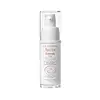What's inside
What's inside
 Key Ingredients
Key Ingredients

 Benefits
Benefits

 Concerns
Concerns

 Ingredients Side-by-side
Ingredients Side-by-side

Water
Skin ConditioningAluminum Starch Octenylsuccinate
AbsorbentGlycerin
HumectantIsodecyl Neopentanoate
EmollientPPG-15 Stearyl Ether
EmollientCetyl Alcohol
EmollientCetearyl Alcohol
EmollientGlyceryl Stearate
EmollientPEG-100 Stearate
Caprylic/Capric Triglyceride
MaskingDimethicone
Emollient1,2-Hexanediol
Skin ConditioningAscophyllum Nodosum Extract
Skin ConditioningBHT
AntioxidantCaprylyl Glycol
EmollientCeteareth-33
CleansingDisodium EDTA
Retinal
Skin ConditioningSodium Dextran Sulfate
Gel FormingSodium Hyaluronate
HumectantSodium Hydroxide
BufferingTocopheryl Acetate
AntioxidantXanthan Gum
EmulsifyingWater, Aluminum Starch Octenylsuccinate, Glycerin, Isodecyl Neopentanoate, PPG-15 Stearyl Ether, Cetyl Alcohol, Cetearyl Alcohol, Glyceryl Stearate, PEG-100 Stearate, Caprylic/Capric Triglyceride, Dimethicone, 1,2-Hexanediol, Ascophyllum Nodosum Extract, BHT, Caprylyl Glycol, Ceteareth-33, Disodium EDTA, Retinal, Sodium Dextran Sulfate, Sodium Hyaluronate, Sodium Hydroxide, Tocopheryl Acetate, Xanthan Gum
Water
Skin ConditioningCaprylic/Capric Triglyceride
MaskingGlycerin
HumectantButylene Glycol
HumectantPentaerythrityl Distearate
EmulsifyingShea Butter Ethyl Esters
EmollientCetearyl Olivate
Phenoxyethanol
PreservativeBenzyl Alcohol
PerfumingSorbitan Olivate
EmulsifyingAcrylates/C10-30 Alkyl Acrylate Crosspolymer
Emulsion StabilisingSodium Hydroxide
BufferingSodium Hyaluronate
HumectantSodium Stearoyl Glutamate
CleansingCopernicia Cerifera Cera
EmollientPropanediol
SolventGlycogen
HumectantSodium Gluconate
Skin ConditioningRetinol
Skin ConditioningPolysorbate 20
EmulsifyingEthylhexylglycerin
Skin ConditioningDehydroacetic Acid
PreservativeCitric Acid
BufferingHelianthus Annuus Seed Oil
Emollient1,2-Hexanediol
Skin ConditioningCaprylyl Glycol
EmollientDisodium Cocoamphodiacetate
CleansingTocopherol
AntioxidantXanthan Gum
EmulsifyingEthyl Ferulate
AntioxidantHumulus Lupulus Extract
AntimicrobialWater, Caprylic/Capric Triglyceride, Glycerin, Butylene Glycol, Pentaerythrityl Distearate, Shea Butter Ethyl Esters, Cetearyl Olivate, Phenoxyethanol, Benzyl Alcohol, Sorbitan Olivate, Acrylates/C10-30 Alkyl Acrylate Crosspolymer, Sodium Hydroxide, Sodium Hyaluronate, Sodium Stearoyl Glutamate, Copernicia Cerifera Cera, Propanediol, Glycogen, Sodium Gluconate, Retinol, Polysorbate 20, Ethylhexylglycerin, Dehydroacetic Acid, Citric Acid, Helianthus Annuus Seed Oil, 1,2-Hexanediol, Caprylyl Glycol, Disodium Cocoamphodiacetate, Tocopherol, Xanthan Gum, Ethyl Ferulate, Humulus Lupulus Extract
 Reviews
Reviews

Ingredients Explained
These ingredients are found in both products.
Ingredients higher up in an ingredient list are typically present in a larger amount.
1,2-Hexanediol is a synthetic liquid and another multi-functional powerhouse.
It is a:
- Humectant, drawing moisture into the skin
- Emollient, helping to soften skin
- Solvent, dispersing and stabilizing formulas
- Preservative booster, enhancing the antimicrobial activity of other preservatives
This ingredient is an emollient, solvent, and texture enhancer. It is considered a skin-softener by helping the skin prevent moisture loss.
It helps thicken a product's formula and makes it easier to spread by dissolving clumping compounds.
Caprylic Triglyceride is made by combining glycerin with coconut oil, forming a clear liquid.
While there is an assumption Caprylic Triglyceride can clog pores due to it being derived from coconut oil, there is no research supporting this.
Learn more about Caprylic/Capric TriglycerideCaprylyl Glycol is a humectant and emollient, meaning it attracts and preserves moisture.
It is a common ingredient in many products, especially those designed to hydrate skin. The primary benefits are retaining moisture, skin softening, and promoting a healthy skin barrier.
Though Caprylyl Glycol is an alcohol derived from fatty acids, it is not the kind that can dry out skin.
This ingredient is also used as a preservative to extend the life of products. It has slight antimicrobial properties.
Learn more about Caprylyl GlycolGlycerin is already naturally found in your skin. It helps moisturize and protect your skin.
A study from 2016 found glycerin to be more effective as a humectant than AHAs and hyaluronic acid.
As a humectant, it helps the skin stay hydrated by pulling moisture to your skin. The low molecular weight of glycerin allows it to pull moisture into the deeper layers of your skin.
Hydrated skin improves your skin barrier; Your skin barrier helps protect against irritants and bacteria.
Glycerin has also been found to have antimicrobial and antiviral properties. Due to these properties, glycerin is often used in wound and burn treatments.
In cosmetics, glycerin is usually derived from plants such as soybean or palm. However, it can also be sourced from animals, such as tallow or animal fat.
This ingredient is organic, colorless, odorless, and non-toxic.
Glycerin is the name for this ingredient in American English. British English uses Glycerol/Glycerine.
Learn more about GlycerinSodium Hyaluronate is hyaluronic acid's salt form. It is commonly derived from the sodium salt of hyaluronic acid.
Like hyaluronic acid, it is great at holding water and acts as a humectant. This makes it a great skin hydrating ingredient.
Sodium Hyaluronate is naturally occurring in our bodies and is mostly found in eye fluid and joints.
These are some other common types of Hyaluronic Acid:
Learn more about Sodium HyaluronateSodium Hydroxide is also known as lye or caustic soda. It is used to adjust the pH of products; many ingredients require a specific pH to be effective.
In small amounts, sodium hydroxide is considered safe to use. However, large amounts may cause chemical burns due to its high alkaline.
Your skin has a natural pH and acid mantle. This acid mantle helps prevent harmful bacteria from breaking through. The acid mantle also helps keep your skin hydrated.
"Alkaline" refers to a high pH level. A low pH level would be considered acidic.
Learn more about Sodium HydroxideWater. It's the most common cosmetic ingredient of all. You'll usually see it at the top of ingredient lists, meaning that it makes up the largest part of the product.
So why is it so popular? Water most often acts as a solvent - this means that it helps dissolve other ingredients into the formulation.
You'll also recognize water as that liquid we all need to stay alive. If you see this, drink a glass of water. Stay hydrated!
Learn more about WaterXanthan gum is used as a stabilizer and thickener within cosmetic products. It helps give products a sticky, thick feeling - preventing them from being too runny.
On the technical side of things, xanthan gum is a polysaccharide - a combination consisting of multiple sugar molecules bonded together.
Xanthan gum is a pretty common and great ingredient. It is a natural, non-toxic, non-irritating ingredient that is also commonly used in food products.
Learn more about Xanthan Gum